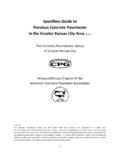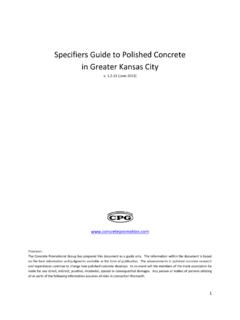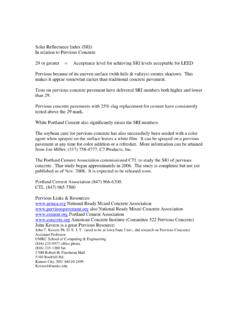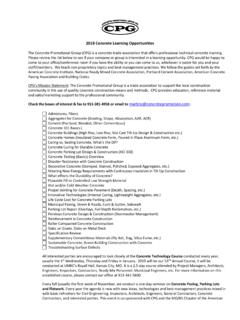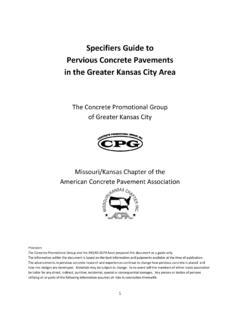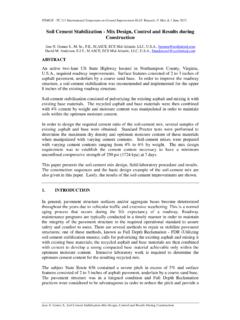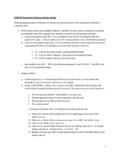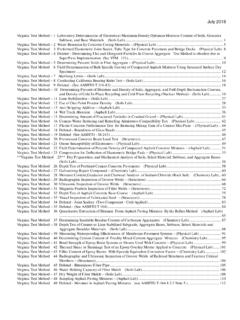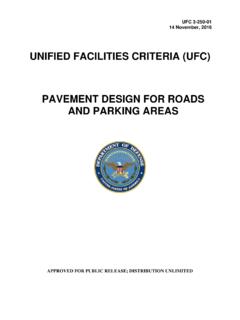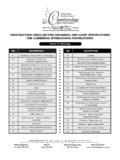Transcription of Guideline for Flowable Fill or CLSM - Concrete Promotion
1 Guideline for Flowable fill or CLSM Controlled Low Strength Material Flowable fill is an earthlike material to be used as soil replacement, it is self compacting and has a Flowable consistency. Typical uses include: utility trench backfill, mud jacking, erosion control, pipe bedding, subbase stabilization, sink hole fills, construction mud mats, abandoned tank fills, and more. The biggest benefits for using Flowable fill instead of earth material is safety, ease of placement and compaction, economics and superior results. The alternative puts a worker in a trench to fill the hole in a series of earth compacted lifts. This puts the worker in a potentially unsafe position.
2 This is also a time consuming process and typically yields call backs when settlement occurs. REFERENCES: ACI 229 Controlled Low Strength Material ( ) ASTM D6103, C939, C143, D6023, C1152, D4380, D1556, D2922, D6024, C403, D4832, D1196, D4429 NRMCA Guide Specification for Controlled Low Strength ( ) Flowable fill Strengths A broad definition of Flowable fill includes materials that haveup to a 1200 psi compressive strength. Type of Flowable : range for psi:Excavatable or Removable 35 200 psiNon excavatable or Non removable: 300 1200 psi (some at 200 300 psi are mechanically excavatable) The Guideline below refers to Excavatable or Removable Flowable fill :Materials: Mix design parameters:Cementitious Materials 100 300lb.
3 (Portland Cement Type I or II, Fly Ash or Slag) (Maximum of 200 lbs of straight cement) Sand 2000 3000 lbs (depends on air, water & cementitious materials) Water water to cementitious ratio = to Air 10 30% (10 15%is common)Unit Weight 118pcf +/ 8 Important Notes: Fly ash will increase the long term strength gain. Fly ash will lower the early strength gain. Increasing the fly ash will typically lower the water demand. Ambient temperature WILL affect the placement and performance of the product.
4 The higher the air the more likely it will be removable in the future. Flowable fill can be placed by belt. Pumping is difficult but the mix can be modified (increasing air) to make it more pumpable. Be careful to not float a pipe when placing Flowable fill . The pipe should be anchored down securely. fill the trench to about the halfway point on the pipe and let it settle and cure. Then continue to fill the trench. Remember the water in the mix must have somewhere to bleed off for the Flowable fill to set up. In high plasticity clay soils caution must be taken to allow for the bleed water to rise and evaporate or migrate elsewhere. The 3, 5 or 7 day compressive breaks are not necessarily indicators for the 28 day breaks.
5 If the material falls apart when removing the test cylinder, it is mostly likely excavatable or removable. A Performance Specification Option: Maximum 200 psi compressive strength (at 28 days)
